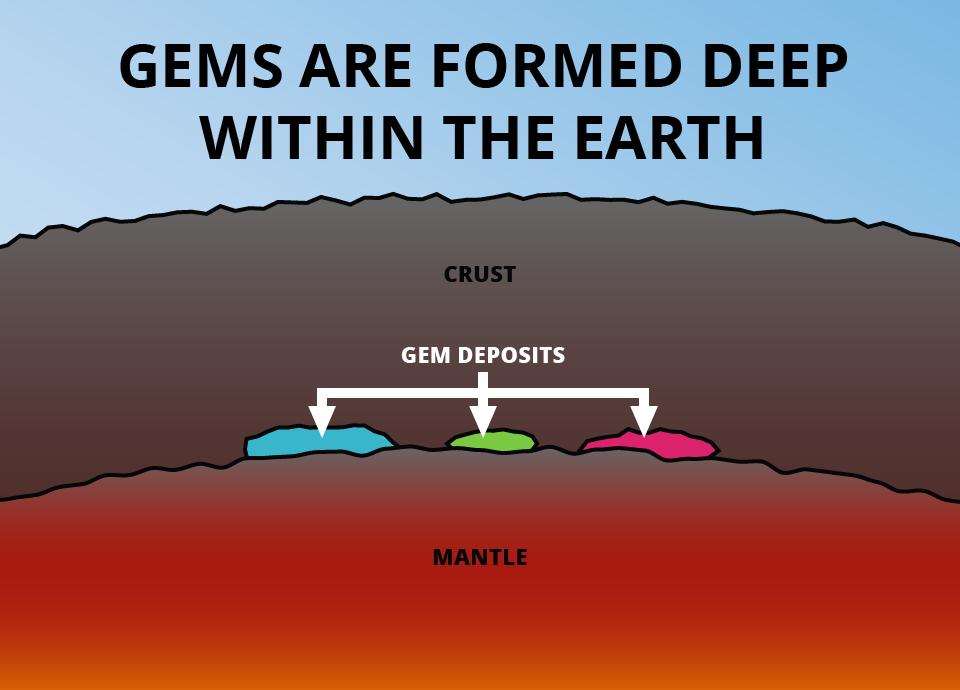You might be wondering where the beautiful gems in the display case come from. Gemstones are natural crystalline mineral structures that form over many years deep in the earth. They end up on your ring, neck, or earrings after being mined and cut into shape.Did you know that gems and rocks aren’t very different from one another?
Learn about how gemstones are formed inside the earth. Discover the geological process that creates the conditions for minerals to crystallize. And see how you can create your own crystals to observe the process in action – while also making a delicious snack.
WHERE DO GEMS ORIGINATE AND HOW ARE THEY FORMED?
If you’ve ever wondered “where do gemstones come from?”, the answer lies in understanding the geology of how they’re formed. Gems result from specific crystal formations under There are five key requirements for crystals to form: space, pressure, temperature, ingredients, and time.
Moreover, gems can only form in one of four ways—which also corresponds with the ways that rocks are generally formed. Ultimately, both gems and rocks derive from minerals combining in crystalline structures. The particular type crystals that will then go on to form depend upon what sort of rock it’s forming within.
Four Ways in Which Gems and Rocks Form
Crystalline structures are what give both rocks and gems their unique properties. However, the type of gem that forms is dependent on two factors: The environment present when it crystallizes and how deep underground it materializes. To better understand this process, think of the Earth as one big convection oven constantly churning out new rocks. Here are four different types that can result from this process:
- Igneous rocks – which are the most valuable – originate under conditions of extreme heat and pressure.
- Hydrothermal rocks come from the cooling of mineral-rich water reservoirs situated beneath the ocean floor.
- Metamorphic rocks are created through transformation by extreme heat and pressure but have hydrothermal origins.
- Sedimentary rocks, though still deep underground, are closest to being at surface level since they form over time as sediment in bodies of water consolidate.
How do minerals turn into crystals?
Did you know that gems come from the crystallization of minerals? How do minerals crystalize?
CRYSTALLIZATION OF MINERALS IN THE EARTH TO FORM GEMS
In your experiment that you did with this mastery badge (See the mastery badge packet), you may have noticed that sugar crystallizes differently based on temperature. The same phenomenon occurs with minerals in the earth. For example, corundum crystals form in a still-hot solution, while topaz crystals form after it cools down slightly. Quartz crystals only form when the solution has cooled completely.
Sugar crystals form under low pressure, meaning this experiment can be performed on Earth. However, gems cannot form in the same environments as sugar crystals because they require high levels of pressure and heat over an extended period – both of which are found deep in the Earth’s mantle.
Geologists and gemologists often rely on modern technology to recreate natural crystalization conditions in an industrial setting. However, laboratorily produced gems can never compare to those created under the earth’s surface. Additionally, when it comes time to purchase jewelry, there is no better option than natural earth-mined gems.






